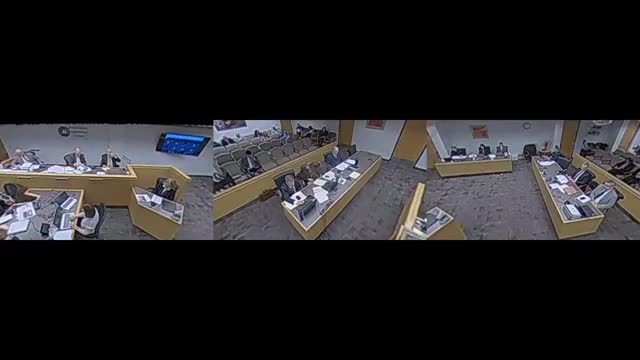OCS witness Mark Ellis critiques Rocky Mountain Power's liability insurance cost proposals
March 23, 2025 | Utah Public Service Commission, Utah Subcommittees, Commissions and Task Forces, Utah Legislative Branch, Utah
This article was created by AI summarizing key points discussed. AI makes mistakes, so for full details and context, please refer to the video of the full meeting. Please report any errors so we can fix them. Report an error »

In a pivotal government meeting held in Utah, discussions surrounding the Rocky Mountain Power's rate case took center stage, as stakeholders grappled with the implications of escalating costs and insurance strategies. Under the bright lights of the conference room, OCS witness Mark Ellis presented a compelling white paper advocating for self-insurance as a viable solution to mitigate rising costs associated with the Electric Line Inspection Program (ELIP).
Ellis's testimony was multifaceted, addressing critical issues that could shape the future of energy costs for Utah residents. He firmly stated that Rocky Mountain Power had failed to provide sufficient evidence to support their claim that the recent James verdict did not influence the ELIP costs, which they sought to recover through a deferred accounting order (DAO). Ellis urged the Public Service Commission (PSC) to deny this request, emphasizing that without clear evidence, the burden of proof remained unfulfilled.
Moreover, Ellis proposed a more equitable approach to cost allocation, suggesting that the current method based on the System Operator (SO) factor was outdated. He argued for a shift towards a wildfire risk-based allocation, which he believed would better reflect the realities of risk management and benefit both shareholders and ratepayers. This sentiment echoed throughout the meeting, as various parties aligned with the OCS's recommendations regarding the DAO and the proposed insurance cost adjustment (ICA).
Ellis also highlighted the need for a thorough evaluation of self-insurance within the next six to nine months, allowing stakeholders to assess its viability before the ELIP renewal in February 2026. He concluded his testimony by reiterating the importance of transparency and collaboration in determining just and reasonable rates for Utah customers.
As the meeting wrapped up, the implications of these discussions loomed large. The PSC's decisions in the coming months could significantly impact energy costs and the financial landscape for both consumers and shareholders in Utah, setting the stage for a critical period of review and potential reform in the state's energy sector.
Ellis's testimony was multifaceted, addressing critical issues that could shape the future of energy costs for Utah residents. He firmly stated that Rocky Mountain Power had failed to provide sufficient evidence to support their claim that the recent James verdict did not influence the ELIP costs, which they sought to recover through a deferred accounting order (DAO). Ellis urged the Public Service Commission (PSC) to deny this request, emphasizing that without clear evidence, the burden of proof remained unfulfilled.
Moreover, Ellis proposed a more equitable approach to cost allocation, suggesting that the current method based on the System Operator (SO) factor was outdated. He argued for a shift towards a wildfire risk-based allocation, which he believed would better reflect the realities of risk management and benefit both shareholders and ratepayers. This sentiment echoed throughout the meeting, as various parties aligned with the OCS's recommendations regarding the DAO and the proposed insurance cost adjustment (ICA).
Ellis also highlighted the need for a thorough evaluation of self-insurance within the next six to nine months, allowing stakeholders to assess its viability before the ELIP renewal in February 2026. He concluded his testimony by reiterating the importance of transparency and collaboration in determining just and reasonable rates for Utah customers.
As the meeting wrapped up, the implications of these discussions loomed large. The PSC's decisions in the coming months could significantly impact energy costs and the financial landscape for both consumers and shareholders in Utah, setting the stage for a critical period of review and potential reform in the state's energy sector.
View full meeting
This article is based on a recent meeting—watch the full video and explore the complete transcript for deeper insights into the discussion.
View full meeting

